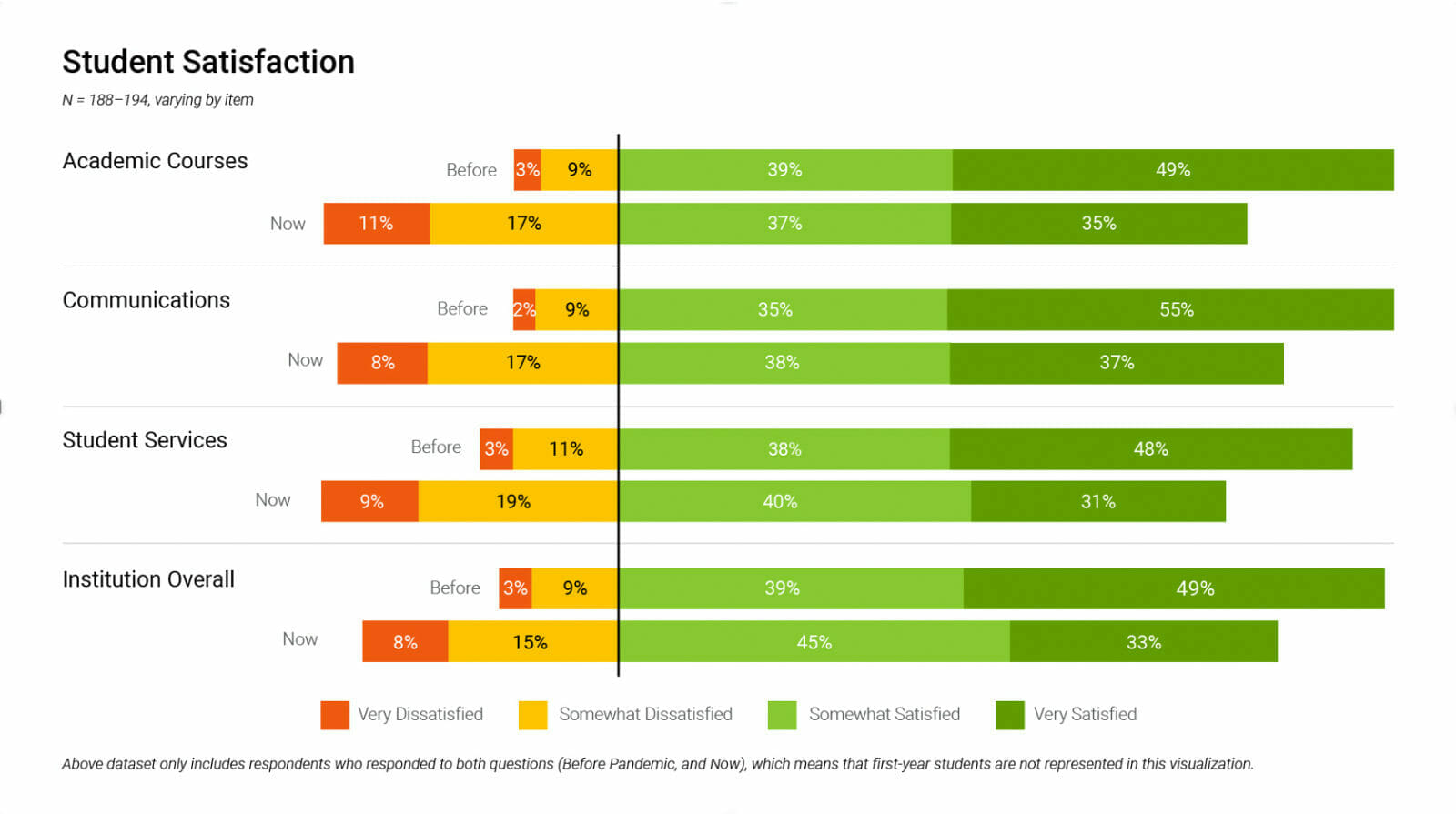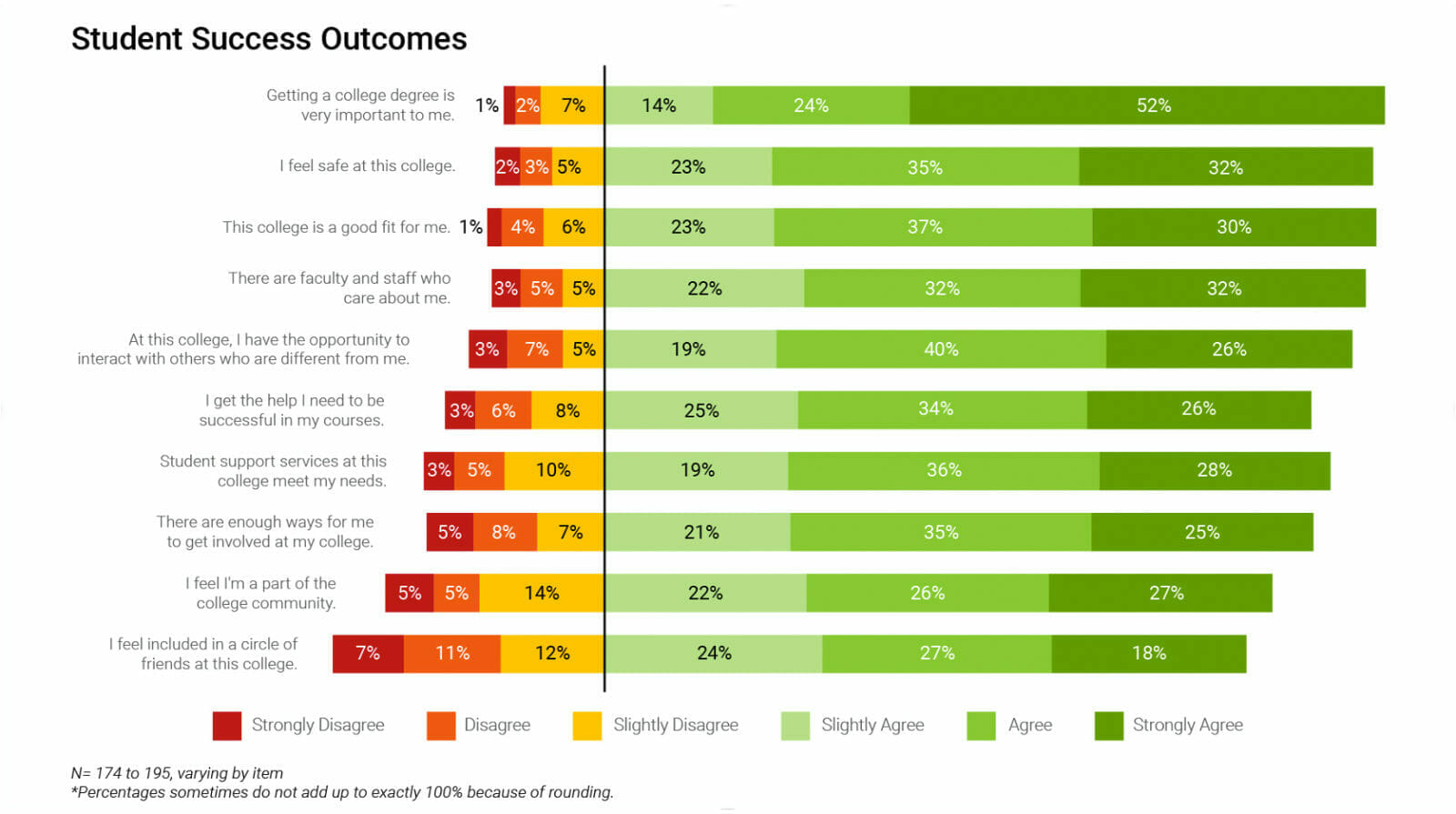
Pandemic Student Survey Results: Community Colleges
In a nationwide survey of current college students about their experience during the pandemic, 210 students from community colleges responded to the survey (with a total of 1,143 respondents). Below are some of our key findings specifically for community college respondents. Overall, findings were similar to the overall population, indicating similar sentiment among community colleges and their four-year peers.
Below are some key highlights:
Student satisfaction
Student satisfaction is lower during the pandemic, with 1 in 4 students indicating they are dissatisfied in at least one of the following areas: academic courses, communications, student services or with the institution overall. This compares to about 1 in 10 students previously indicating dissatisfaction. However, satisfaction decreased less among community college students than among their four-year counterparts. This is a positive indication for community colleges; however, this is also an indication that there remains opportunity to continue to enhance the student experience during the pandemic.

Educational Environment
Less than 2% of community college students surveyed indicated they are in fully in-person classes. The large majority reported having fully online courses in the fall term, of which half were fully in-person before the pandemic. However, 54% of students reported that the classroom environment had changed at some point this semester (i.e., moving to virtual from in-person, etc.). These students are less likely to re-enroll, showed lower satisfaction, and had lower student success outcomes. This seems to indicate the potential negative impact of change and is an element that institutions should keep in mind going into the spring term.
Retention
Even though there is higher dissatisfaction than before the pandemic, community college students still report high likelihoods of being enrolled at their college next term. In fact, nearly 9 in 10 students indicated they definitely or probably will enroll at the same college next term. However, other factors impact enrollment, including financial concerns and the continuing impact of the pandemic. In fact, 7 of 10 students expressed concern about their ability to pay for their education, while this was even higher for first-generation students at nearly 8 of 10 students.

Also having a potential impact on retention is an institution’s plan in the wake of the pandemic. While nearly 6 out of 10 students indicated that the plans of their institution were just right, 1 in 3 students indicated that the plans were much too risky or somewhat too risky. Institutions should be as flexible as possible in supporting students participating in classes in their preferred format during this time.
Final thoughts
Community college students are committed to getting their degree, even in the midst of the pandemic. However, each student’s college experience or circumstance is unique, and institutions should continue to strive to support students in a virtual or hybrid environment, especially as it relates to making student support services available and checking in on students. While intent to complete their programs is high, students remain concerned about their education, finances and future in these uncertain and challenging times.
Download the whitepaper on the overall student survey results for more details about student sentiment during the pandemic.
